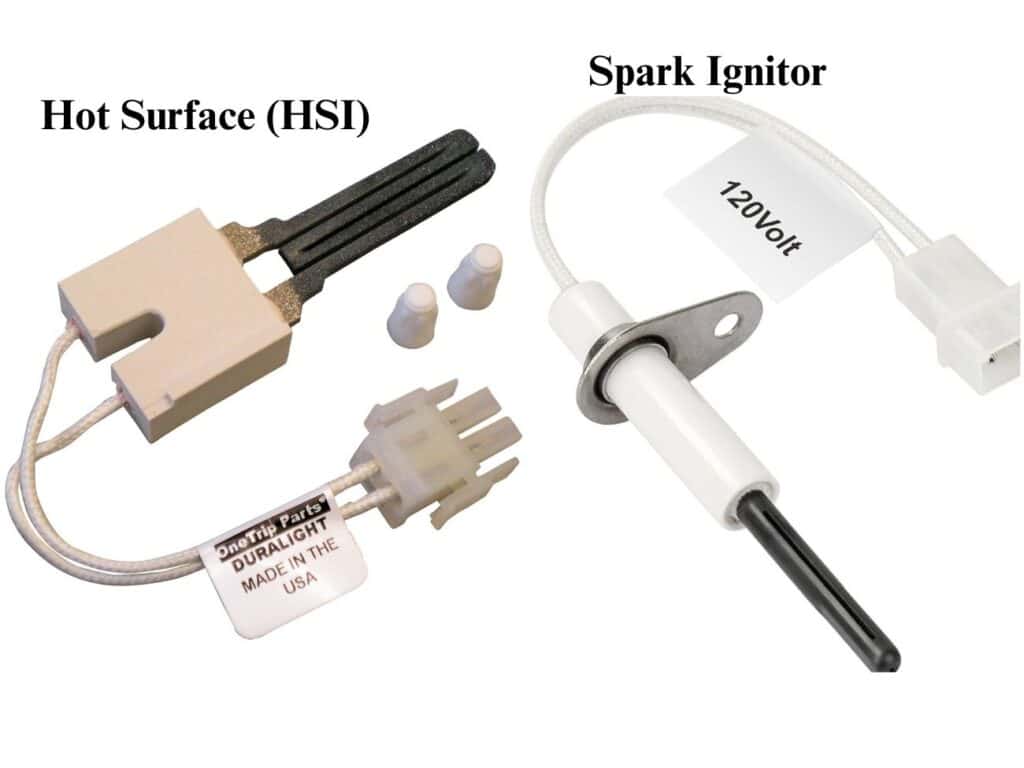Your furnace ignitor plays a crucial role in keeping your home warm during chilly months. It’s responsible for lighting the gas in your furnace, allowing it to produce heat. If your furnace isn’t turning on and you’ve ruled out other issues, a faulty ignitor might be the culprit. The good news? Changing a furnace ignitor is a manageable task for many homeowners.
Here’s a friendly guide to help you through the process.
The ignitor is typically located near the burners inside the furnace. There are two main types:
- Hot Surface Ignitors: These are small, rectangular ceramic pieces that heat up to a very high temperature to ignite the gas. They often resemble a small, white rectangle with two wires attached.
- Spark Ignitors: These use a spark to ignite the gas, similar to a spark plug in a car. They usually have a small electrode that creates the spark.

Signs Your Furnace Ignitor Needs Replacing
Before diving into the replacement process, it’s important to confirm that the ignitor is the issue. Common signs of a faulty ignitor include:
- Your furnace won’t start.
- You hear the furnace clicking, but it doesn’t ignite.
- The ignitor looks visibly cracked or damaged.
- Your furnace’s error code indicates an ignitor problem (check your furnace manual for details).
If you’ve noticed these symptoms, it’s time to replace the ignitor.
Step 1: Gather the Necessary Tools
To replace your furnace ignitor, you’ll need the following tools:
- A new ignitor (make sure it matches your furnace model; consult your manual or take the old ignitor to the store for comparison).
- A screwdriver (usually Phillips or flathead).
- A socket wrench (if needed for your furnace model).
- Safety gloves.
- A flashlight (to see into tight spaces).
Step 2: Turn Off Power and Gas
Safety first! Before you start, turn off the power to your furnace at the circuit breaker. Next, turn off the gas supply to your furnace. These steps are critical to prevent accidents while you work.
Step 3: Locate the Ignitor
Open the access panel on your furnace to locate the ignitor. It’s usually positioned near the burners and connected to the furnace with a wiring harness. If you’re unsure where to find it, refer to your furnace manual for guidance.
Step 4: Remove the Old Ignitor
Once you’ve found the ignitor, follow these steps to remove it:
- Disconnect the wiring harness: Gently unplug the wires connected to the ignitor. Be careful not to damage the connectors.
- Unscrew the ignitor: Use your screwdriver or socket wrench to remove the screws holding the ignitor in place. Keep the screws in a safe spot for reinstallation.
- Carefully remove the ignitor: The ignitor is delicate and can break easily. Handle it with care as you remove it from the furnace.
Step 5: Install the New Ignitor
Now that the old ignitor is out, it’s time to install the new one. Here’s how:
- Position the new ignitor: Align the new ignitor with the mounting holes in your furnace.
- Secure the ignitor: Use the screws you set aside earlier to attach the new ignitor to the furnace. Be careful not to overtighten, as this can crack the ignitor.
- Reconnect the wiring harness: Plug the wires back into the new ignitor. Ensure the connection is secure.
Step 6: Test the Furnace
With the new ignitor installed, it’s time to test your furnace:
- Turn the gas supply back on.
- Restore power to the furnace at the circuit breaker.
- Set your thermostat to call for heat.
If everything is working correctly, your furnace should ignite and start producing heat. Congratulations—you’ve successfully replaced your furnace ignitor!
Troubleshooting Tips
If your furnace still isn’t working after replacing the ignitor, consider these troubleshooting steps:
- Double-check the wiring connections to ensure they’re secure.
- Verify that the ignitor is properly aligned and mounted.
- Consult your furnace’s error codes to identify any additional issues.
- Call a professional HVAC technician if the problem persists.
Tips for Maintaining Your Furnace Ignitor
To extend the life of your new ignitor and keep your furnace running smoothly, follow these maintenance tips:
- Schedule regular tune-ups: Annual furnace maintenance can catch small issues before they become big problems.
- Replace your air filter regularly: A dirty filter can strain your furnace and lead to component failure.
- Keep the area around your furnace clean: Dust and debris can affect the performance of your furnace parts, including the ignitor.
While replacing a furnace ignitor is a relatively simple task, there are times when calling a professional is the best option. Seek professional help if:
- You’re uncomfortable working with gas or electrical components.
- Your furnace has additional issues beyond the ignitor.
- The new ignitor doesn’t resolve the problem.
Replacing a furnace ignitor is often a manageable DIY project that can save you money on repair costs. By following these steps and taking the necessary safety precautions, you can get your furnace back up and running in no time. But remember, if you have any doubts or concerns, don’t hesitate to call a professional.






